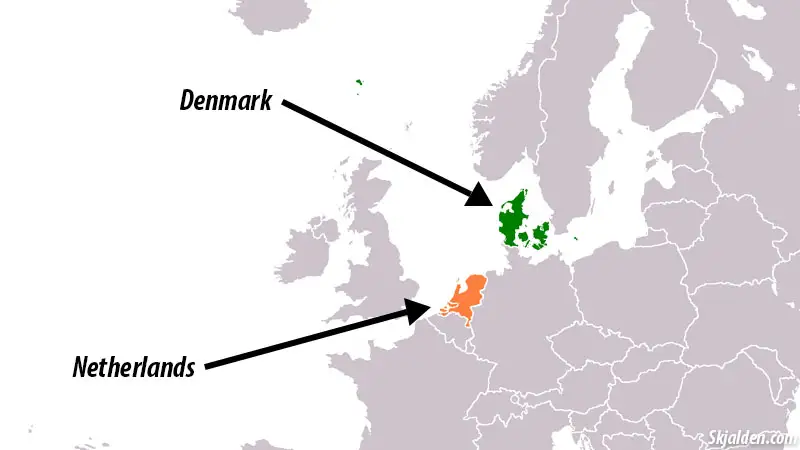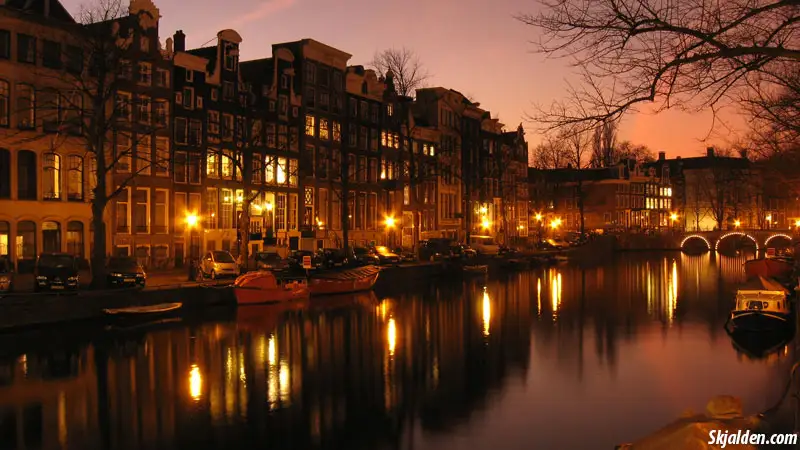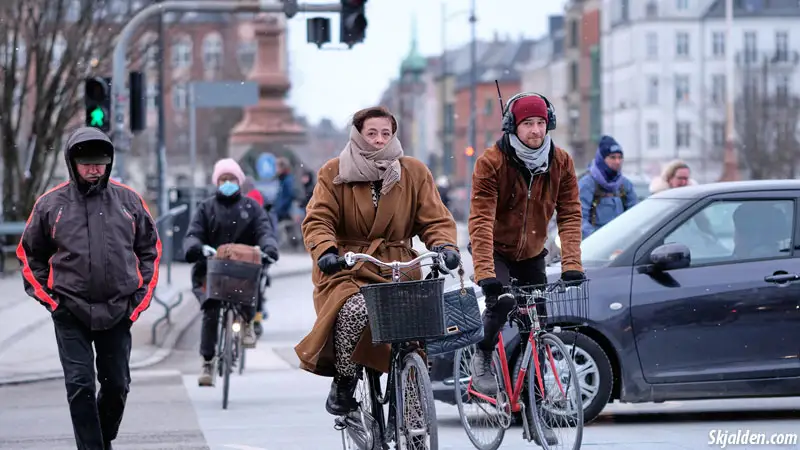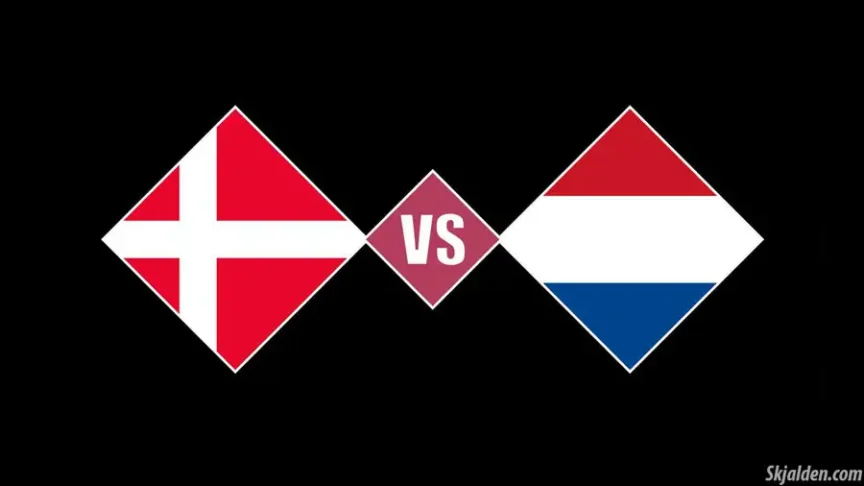Often, there’s a mix-up between Dutch vs Danish, mostly because of their somewhat similar-sounding names. However, the distinctions between the two are significant. In this article, I will shed light on the unique aspects of Dutch and Danish cultures and languages by comparing them for those curious about these European gems.
Distinct Origins: Dutch and Danish People
The Dutch come from the Netherlands, a country rich in history and situated in Western Europe. Known for its significant role in global trade and exploration, the Netherlands has made a notable impact worldwide. This country, famous for its picturesque canals and fields of tulips, lies just north of Belgium and west of Germany.
On the other hand, Danish people are from Denmark, a key part of Scandinavian culture and located in Northern Europe. Denmark, bordered to the south by Germany, extends into the North Sea and the Baltic Sea, showcasing a landscape marked by its coastal beauty.
The country’s past, brimming with tales of Vikings and their maritime exploits, has shaped Denmark into a nation deeply focused on enhancing the quality of life and welfare of its citizens. Though Denmark may not be as globally renowned as the Netherlands, its contributions to design, cuisine, and sustainable living practices are significant and widely respected.

Language: Dutch vs Danish
Speaking of languages, Dutch and Danish are quite distinct. Dutch is part of the West Germanic language group and shares some similarities with English and German. It’s known for its unique pronunciation and dialects that vary across regions.
Danish, a North Germanic language, shares closer ties with Swedish and Norwegian. It’s known for its melodic tone and the distinct ‘stød’, a glottal stop that is unique to Danish. While both languages stem from Germanic roots, they have evolved differently, making them unique in their own right. When comparing Dutch vs Danish, their linguistic differences become even more apparent.
Pronunciation: Dutch has unique vowel sounds like “ui” (as in “huis”) and “eu” (as in “leuk”).
Danish features the distinct ‘stød’ or glottal stop, which affects the pronunciation of certain words.
Alphabet:
Dutch uses the Latin alphabet with the addition of some diacritic marks like the trema (¨) and acute accent (´).
Danish also uses the Latin alphabet but includes three additional letters: Æ, Ø, and Å.
Vocabulary: While both languages share some common words due to their Germanic roots, they also have different vocabulary for everyday items. For example, “bicycle” is “fiets” in Dutch and “cykel” in Danish.
Grammar: Dutch and Danish have distinct grammar rules, especially when it comes to word order, verb conjugations, and gendered nouns.
Pronouns: Personal pronouns can differ, such as “I” being “ik” in Dutch and “jeg” in Danish.
Cultural Echoes: Beyond Language
If we take a closer look at their cultures, both Dutch and Danish societies demonstrate a strong commitment to quality of life, freedom, and social welfare. However, the way they express their culture and values shows significant differences.
In the Netherlands, culture is deeply rooted in a rich history of art, philosophy, and architecture. The Dutch Golden Age, a period in the 17th century, was particularly notable for its tremendous contributions to art and science. Artists like Rembrandt and Van Gogh are iconic figures, representing the depth and innovation of Dutch artistry.
Their works not only capture the aesthetic beauty of their times but also reflect the social and moral contexts of Dutch society. Furthermore, Dutch philosophy, with thinkers like Erasmus and Spinoza, has played a crucial role in shaping modern thought, emphasizing tolerance and rationalism.

Dutch architecture, known for its blend of functionality and aesthetics, ranges from the canal houses of Amsterdam, which combine practicality with elegance, to modern, sustainable designs seen in recent urban developments. The Netherlands is also recognized for its landscape architecture, particularly the ingenious use of land reclamation and water management, reflecting a harmonious balance between human ingenuity and nature.
On the other hand, Danish culture is characterized by the concept of ‘hygge,’ which is more than just a word; it’s a way of life. This concept encompasses a feeling of cozy contentment and well-being through enjoying the simple things in life. This cultural aspect is reflected in every facet of Danish life, from interior design and architecture to social gatherings and everyday practices. It’s about creating an atmosphere where warmth, friendship, and comfort are prioritized.
Denmark’s contribution to modern design and architecture also stands out, with a focus on simplicity, functionality, and minimalism. Renowned for its clean lines and high-quality craftsmanship, Danish design extends from furniture and household items to public buildings and urban spaces. Famous designers like Arne Jacobsen and Hans Wegner have influenced the global perception of aesthetics and functionality in design.
Moreover, Danish cuisine, often characterized by its simplicity and emphasis on fresh, locally sourced ingredients, adds another dimension to its culture. Traditional Danish foods like smørrebrød (open-faced sandwiches) and pastries, combined with New Nordic cuisine, highlight Denmark’s culinary creativity and respect for nature.
Dutch vs Danish: Lifestyle and Values
Examining the lifestyle and values in both the Netherlands and Denmark reveals a deep commitment to work-life balance and social equality. This is evident in their everyday lives, where emphasis is placed not just on work, but on leisure, family, and personal well-being.
A key element of this lifestyle is the widespread use of bicycles. In both countries, cycling is not just a mode of transport; it’s a part of the national identity. The Netherlands, with its flat terrain and extensive network of bike paths, is often considered one of the most bike-friendly countries in the world. Cities like Amsterdam and Utrecht are designed with cyclists in mind, making it easy and safe for people of all ages to cycle for commuting, errands, or pleasure.

Similarly, in Denmark, particularly in Copenhagen, bicycles play a central role in daily life. The city’s infrastructure is carefully designed to accommodate cyclists, with dedicated lanes, traffic signals, and parking spaces. This commitment to cycling reflects a broader dedication to environmental sustainability and a healthy lifestyle.
In addition to cycling, both Dutch and Danish societies highly value public transportation. Efficient, reliable, and environmentally friendly public transit systems are a cornerstone in both countries. The use of buses, trains, and in some places trams and ferries, is not only a matter of convenience but also a reflection of societal values that prioritize accessibility, community integration, and reducing carbon footprints.
Regarding social structures and welfare systems, both societies enjoy a high quality of life, but their approaches have subtle differences. Denmark is often seen as a model of social democracy, with a strong welfare state that ensures a high degree of economic equality and security for its citizens. This includes comprehensive healthcare, education, and social services, funded through a progressive tax system.
The Netherlands, while also providing a wide range of social services, tends to blend liberal economic policies with a strong social safety net. This approach ensures a balance between a free-market economy and the provision of government services to support those in need. Dutch policies often emphasize individual responsibility within the framework of collective welfare, leading to a society that is both liberal and socially conscious.
In both countries, these values and lifestyles contribute to a society where citizens not only enjoy rights but are also encouraged to participate actively in community life and the democratic process. This balance of individual freedom and social responsibility is key to understanding the Dutch and Danish approaches to life.
